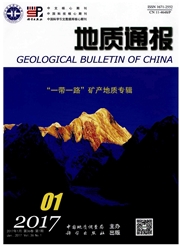

 中文摘要:
中文摘要:
近年来长江口水下三角洲对入海泥沙减少的响应问题越来越受到关注.通过分析长江水下三角洲百年沉积速率的分布特征及位于水下三角洲泥质沉积区不同位置4 个浅孔的粒度、210P b和137Cs数据,探讨其对流域入海水沙变化及水动力变化的响应.研究结果显示,1954年后长江口北支萎缩是导致CDZS10孔所在区域沉积物粒度较其他3 孔明显粗的主要原因.而CDZS10孔沉积物上粗下细则是由20世纪80年代三峡蓄水后长江入海泥沙显著下降、海洋动力明显增强引起的.另外,北支萎缩及三峡水库调蓄作用导致泥质区南移,并向杭州湾和嵊泗列岛延伸发展.
 英文摘要:
英文摘要:
The response of Yangtze River subaquatic delta to river sediment decline has attracted more and more attention in recent years. In this paper,grain sizes and radiometric 210Pb and 13 Cs of the cores in different areas of the subaquatic delta were analyzed to explore the response to river sediment decline and change of hydrodynamic force. The results show that grain sizes of core CDZS10 sediments are much coarser than those of the other three cores which might be closely related to the block of north branch of Yang-tze River in the estuary after 1954. In terms of sediment composition the authors found grain size coarsening up from 1.2m (1979) in Core CDZS10 which might be an obvious response to significant sediments supply decline of the Yangtze River after the 1980's. In addition,the block of north branch and impoundment hasled to the mud region moving southward and extending to Hangzhou Bay and Shengsi Islands.
 同期刊论文项目
同期刊论文项目
 同项目期刊论文
同项目期刊论文
 期刊信息
期刊信息
